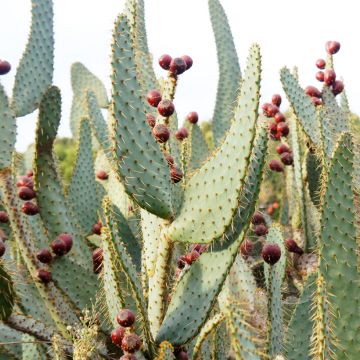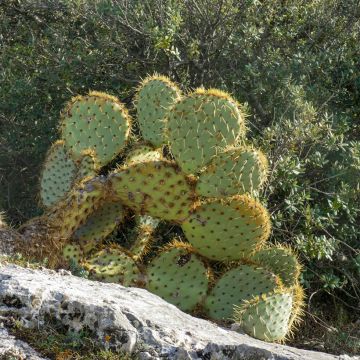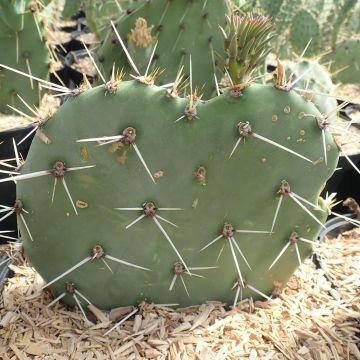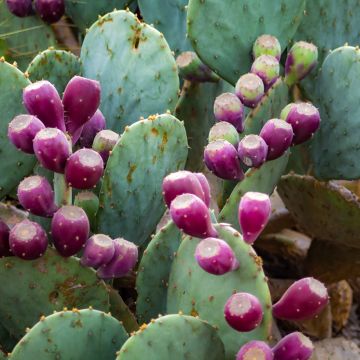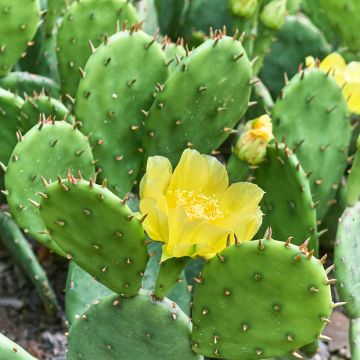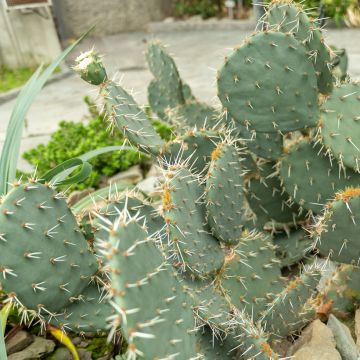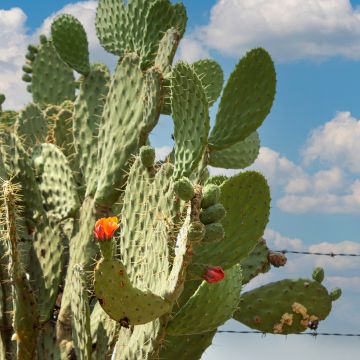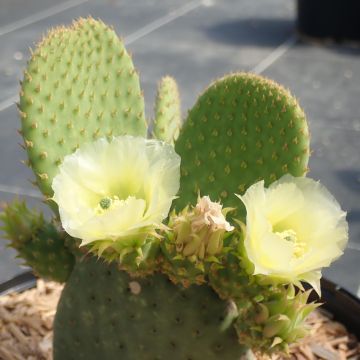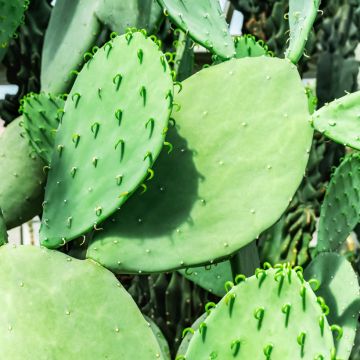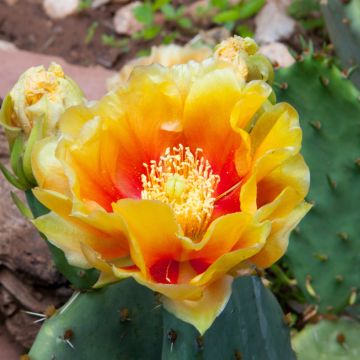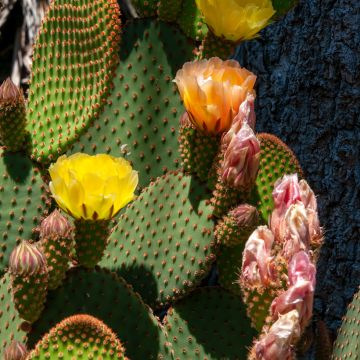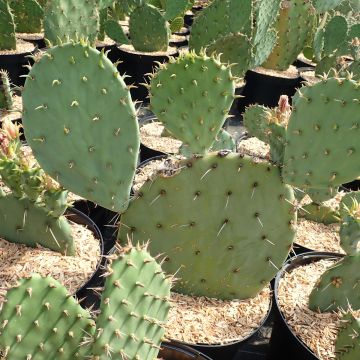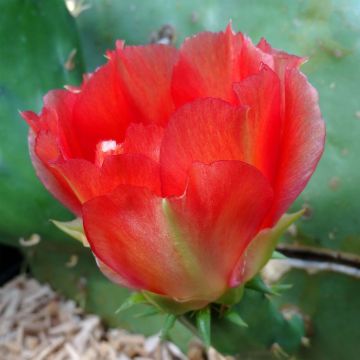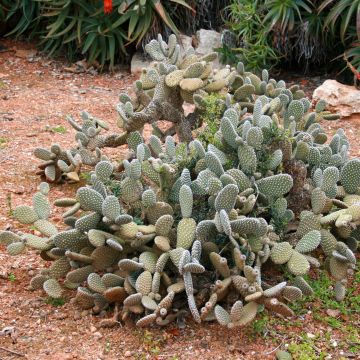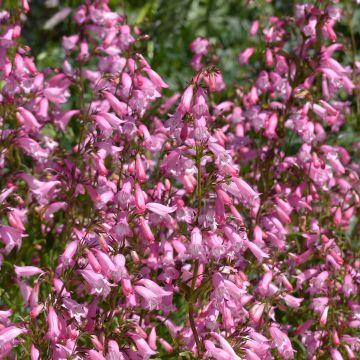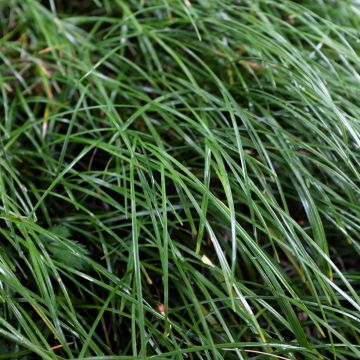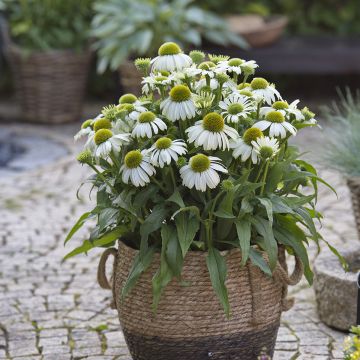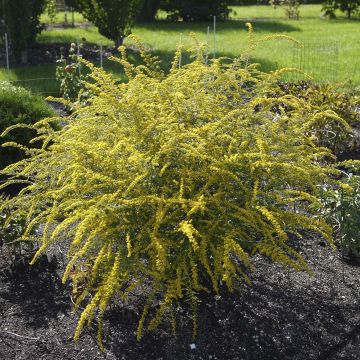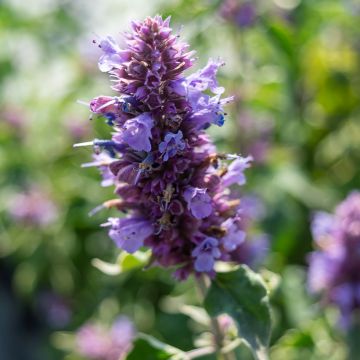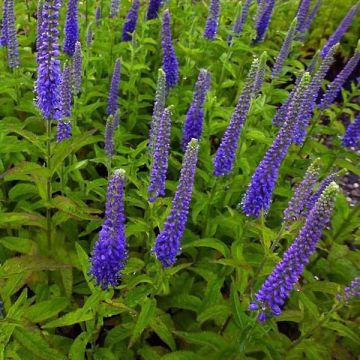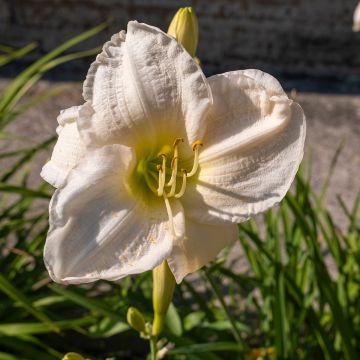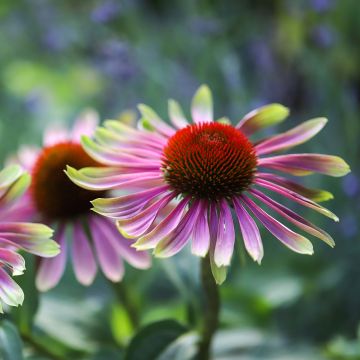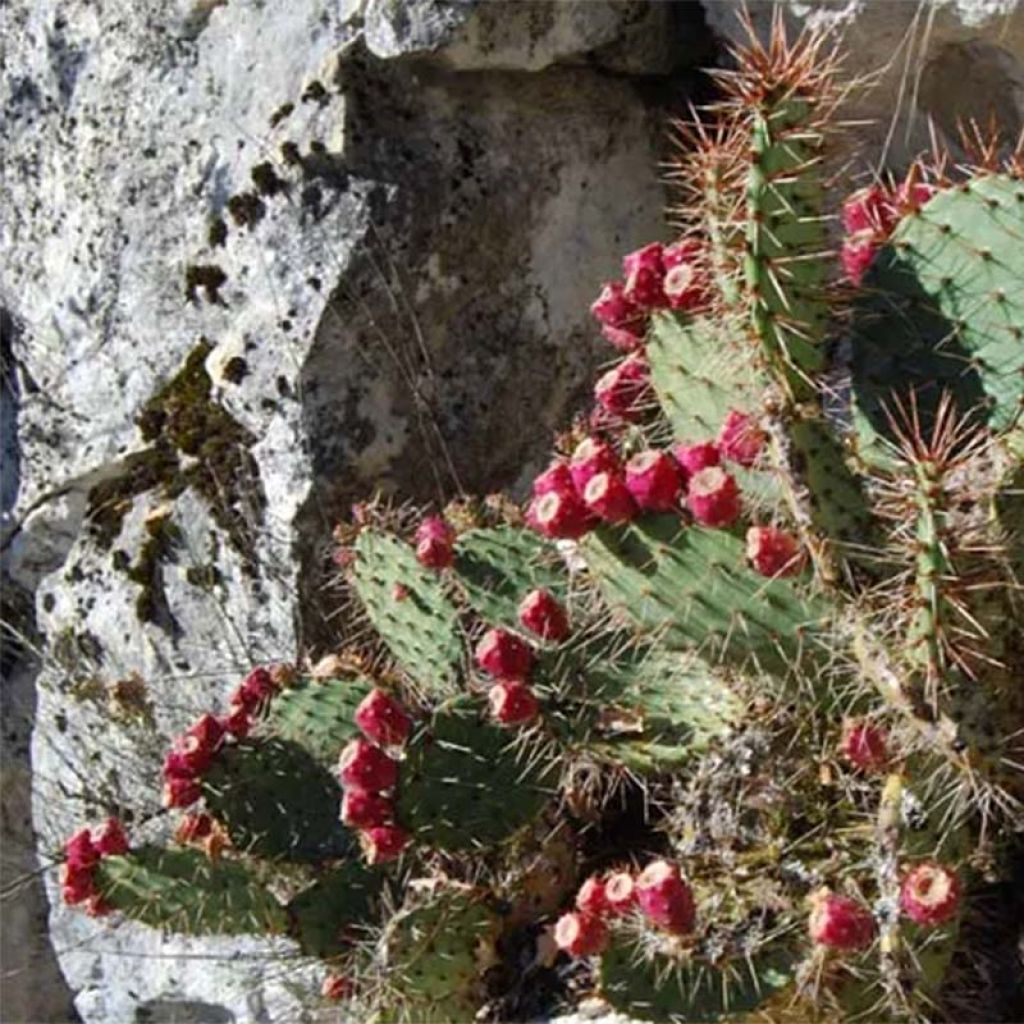

Opuntia zuniensis - Prickly Pear
Opuntia zuniensis - Prickly Pear
Opuntia zuniensis
Opuntia, Prickly Pear
Why not try an alternative variety in stock?
View all →This plant carries a 12 months recovery warranty
More information
We guarantee the quality of our plants for a full growing cycle, and will replace at our expense any plant that fails to recover under normal climatic and planting conditions.
From €5.90 for pickup delivery and €6.90 for home delivery
Express home delivery from €8.90.
Does this plant fit my garden?
Set up your Plantfit profile →
Description
The Opuntia zuniensis is a hardy variety of prickly pear with a compact growth habit that is particularly suited to small spaces. This paddle cactus forms a dense, low-growing bush, wider than it is tall, with a shaggy appearance. Its ovoid, bluish-green paddles are covered in white prickles. The spring flowering is delightful with soft yellow cups that fade to orange, followed by decorative red fruits. Hardy prickly pears are cultivated outdoors, in open ground and away from high-traffic areas. They are excellent plants for arid and rocky soils.
The Opuntia zuniensis, a close relative of the Prickly Pear (Opuntia ficus indica), a succulent plant without true leaves from the cactus family. This North American botanical species is native to Arizona, New Mexico, southern Utah, and southwestern Colorado. It grows relatively slowly and has a prostrate habit, adult specimens will not exceed 30-40 cm (12-16in) in height and will spread laterally up to about 1 m. The vegetation consists of its paddle-like cladodes, which are stacked on top of each other, flattened, fleshy, and thick. The base of the plant becomes lignified with age. The bluish-green paddles are abundantly covered in long white prickles, which turn golden-brown over time, as well as tiny prickles called glochids, clustered in small round tufts, making them very dangerous to handle. Flowering takes place in May-June, depending on the region. Several flowers appear on the edges of the paddles, mainly towards their tips. Their colours vary from pale yellow to brighter yellow, but they all fade to orange. These rounded cup-shaped flowers are ephemeral but very beautiful, composed of petals with a fine, slightly translucent texture. They give way to pear-shaped fruits, heavily covered in glochids, which turn red when ripe.
This amazing little paddle cactus can be cultivated in almost all regions, as it is hardy down to -15 °C without protection, but it requires well-drained, rocky, stony, or sandy soil. It naturally enhances exotic or contemporary landscapes, in a south-facing rocky garden, on a dry slope, or at the edges of a dry garden. It can be combined with hardy candle cacti such as Cleistocactus strausii or Cylindropuntia imbricata. It should be kept away from high-traffic areas and children due to its formidable spines.
Report an error about the product description
Opuntia zuniensis - Prickly Pear in pictures


Flowering
Foliage
Plant habit
Botanical data
Opuntia
zuniensis
Cactaceae
Opuntia, Prickly Pear
North America
Other Opuntia
Planting and care
Plant the Opuntia zuniensis in spring or early autumn, in full sun, in a preferably poor, even stony, limestone, sandy, but very well drained soil. It tolerates winter humidity in porous soil, and appreciates dry, even arid soils in summer. It will withstand frost up to -15°C at the tips, if temperatures rise during the day. Its articles sometimes collapse in winter due to the cold, but 'swell' in spring. This species also tolerates sea spray and can therefore be grown in coastal regions. It is not known to be susceptible to any pests.
Cultivation substrate: 3/4 potting soil + 1/4 vegetable soil + organic fertilizer for potted plants. Sandy, very stony soil, low in clay for open field cultivation.
Propagation by cuttings of prickly pear is easy: take an article at a junction, place it on a cactus type substrate for a few days, until a healing callus forms. Then insert the base of the cutting a bit deeper into the soil and water regularly. The plant will not flower or bear fruit before the age of 3.
Handle your cacti with gloves and protective goggles.
Planting period
Intended location
Care
This item has not been reviewed yet - be the first to leave a review about it.
Summer flowering perennials
Haven't found what you were looking for?
Hardiness is the lowest winter temperature a plant can endure without suffering serious damage or even dying. However, hardiness is affected by location (a sheltered area, such as a patio), protection (winter cover) and soil type (hardiness is improved by well-drained soil).

Photo Sharing Terms & Conditions
In order to encourage gardeners to interact and share their experiences, Promesse de fleurs offers various media enabling content to be uploaded onto its Site - in particular via the ‘Photo sharing’ module.
The User agrees to refrain from:
- Posting any content that is illegal, prejudicial, insulting, racist, inciteful to hatred, revisionist, contrary to public decency, that infringes on privacy or on the privacy rights of third parties, in particular the publicity rights of persons and goods, intellectual property rights, or the right to privacy.
- Submitting content on behalf of a third party;
- Impersonate the identity of a third party and/or publish any personal information about a third party;
In general, the User undertakes to refrain from any unethical behaviour.
All Content (in particular text, comments, files, images, photos, videos, creative works, etc.), which may be subject to property or intellectual property rights, image or other private rights, shall remain the property of the User, subject to the limited rights granted by the terms of the licence granted by Promesse de fleurs as stated below. Users are at liberty to publish or not to publish such Content on the Site, notably via the ‘Photo Sharing’ facility, and accept that this Content shall be made public and freely accessible, notably on the Internet.
Users further acknowledge, undertake to have ,and guarantee that they hold all necessary rights and permissions to publish such material on the Site, in particular with regard to the legislation in force pertaining to any privacy, property, intellectual property, image, or contractual rights, or rights of any other nature. By publishing such Content on the Site, Users acknowledge accepting full liability as publishers of the Content within the meaning of the law, and grant Promesse de fleurs, free of charge, an inclusive, worldwide licence for the said Content for the entire duration of its publication, including all reproduction, representation, up/downloading, displaying, performing, transmission, and storage rights.
Users also grant permission for their name to be linked to the Content and accept that this link may not always be made available.
By engaging in posting material, Users consent to their Content becoming automatically accessible on the Internet, in particular on other sites and/or blogs and/or web pages of the Promesse de fleurs site, including in particular social pages and the Promesse de fleurs catalogue.
Users may secure the removal of entrusted content free of charge by issuing a simple request via our contact form.
The flowering period indicated on our website applies to countries and regions located in USDA zone 8 (France, the United Kingdom, Ireland, the Netherlands, etc.)
It will vary according to where you live:
- In zones 9 to 10 (Italy, Spain, Greece, etc.), flowering will occur about 2 to 4 weeks earlier.
- In zones 6 to 7 (Germany, Poland, Slovenia, and lower mountainous regions), flowering will be delayed by 2 to 3 weeks.
- In zone 5 (Central Europe, Scandinavia), blooming will be delayed by 3 to 5 weeks.
In temperate climates, pruning of spring-flowering shrubs (forsythia, spireas, etc.) should be done just after flowering.
Pruning of summer-flowering shrubs (Indian Lilac, Perovskia, etc.) can be done in winter or spring.
In cold regions as well as with frost-sensitive plants, avoid pruning too early when severe frosts may still occur.
The planting period indicated on our website applies to countries and regions located in USDA zone 8 (France, United Kingdom, Ireland, Netherlands).
It will vary according to where you live:
- In Mediterranean zones (Marseille, Madrid, Milan, etc.), autumn and winter are the best planting periods.
- In continental zones (Strasbourg, Munich, Vienna, etc.), delay planting by 2 to 3 weeks in spring and bring it forward by 2 to 4 weeks in autumn.
- In mountainous regions (the Alps, Pyrenees, Carpathians, etc.), it is best to plant in late spring (May-June) or late summer (August-September).
The harvesting period indicated on our website applies to countries and regions in USDA zone 8 (France, England, Ireland, the Netherlands).
In colder areas (Scandinavia, Poland, Austria...) fruit and vegetable harvests are likely to be delayed by 3-4 weeks.
In warmer areas (Italy, Spain, Greece, etc.), harvesting will probably take place earlier, depending on weather conditions.
The sowing periods indicated on our website apply to countries and regions within USDA Zone 8 (France, UK, Ireland, Netherlands).
In colder areas (Scandinavia, Poland, Austria...), delay any outdoor sowing by 3-4 weeks, or sow under glass.
In warmer climes (Italy, Spain, Greece, etc.), bring outdoor sowing forward by a few weeks.


































